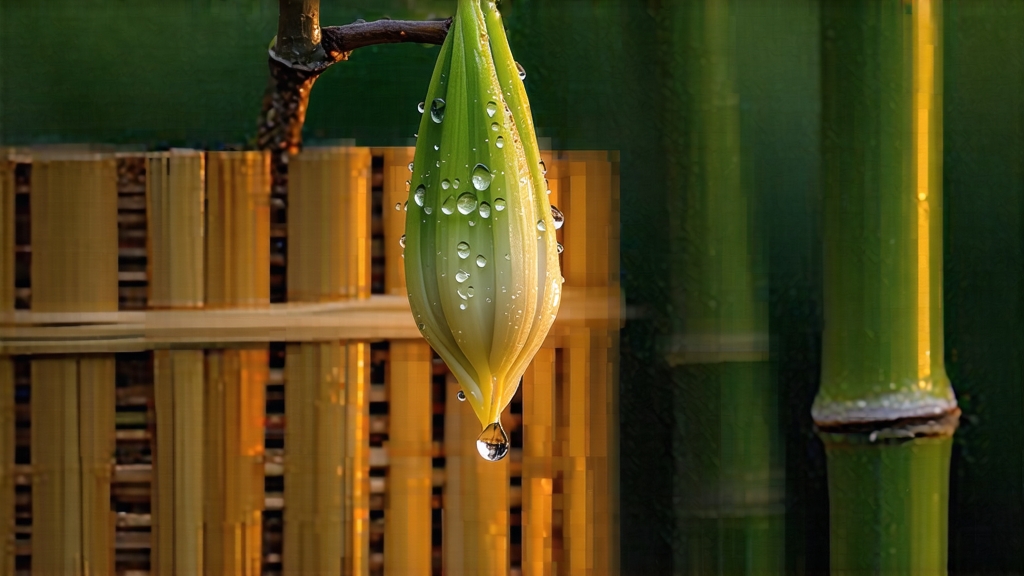
White Hair Silver Needle—Bai Hao Yin Zhen in Mandarin—is the most aristocratic expression of Chinese white tea. To international drinkers who equate “white” with pale liquor alone, the name can sound poetic yet vague; to Chinese growers it is a precise grade, a harvest moment, and a miniature weather forecast rolled into one fuzzy bud. Every spring, before the Qingming festival chill fully retreats, the earliest fat buds of the Da Bai cultivar are coaxed open by mountain mist in northern Fujian’s Fuding and Zhenghe counties. They are plucked with thumbnail precision, laid obediently into bamboo baskets, and then left almost alone—no pan-fire, no rolling, no twisting—while time, air, and subdued sunlight perform the only transformation allowed. The result is a tea that looks like nothing else in the world: an inch-long spear covered in silvery down, shimmering like frost under weak morning light. When steeped, it tastes less of drama than of stillness—soft hay, fresh almond milk, a distant trace of melon rind, and the elusive sweetness that Chinese tasters call qingtian, “light-sky,” a flavor that arrives after swallowing, when the mouth is empty.
Historical whispers place Yin Zhen on Song-dynasty tribute lists, but firm documentary evidence surfaces only in the Qing, when the tea was packed in lead-lined chests and escorted by armed courier to the Forbidden City. Foreign merchants first encountered it in the late nineteenth century through Fuzhou’s treaty port, where it was marketed as “Flowery Pekoe” to distinguish the downy tips from darker black-leaf grades. European porcelain painters even copied the buds onto export cups, mistaking the hairs for tiny white blossoms. By the 1920s Fuding counties had refined two distinct processing styles: the “sun-wither” school that relies on open-air evaporation, and the “bake-wither” school that finishes buds in low charcoal ovens. Both remain legal under China’s 2008 white-tea national standard, yet modern makers increasingly blend the two, chasing the sun when it is mild, retreating to heated rooms when showers threaten.
The cultivar matters as much as the weather. Da Bai Hao, “Big White Hair,” develops buds nearly 30 % longer than ordinary Camellia sinensis var. sinensis, and its trichomes—those microscopic hairs—contain a polyphenol-rich oil that oxidizes into honey-like notes if handled gently. Farmers refuse rainfall-plumped buds, because excess moisture dilutes amino acids and encourages sour microbial notes. Thus the plucking window is cruelly short: ten, sometimes seven, days between late March and early April. Experienced pickers work with three fingers and a thumb, snapping the bud just above the first scale leaf; any stalk longer than two millimeters is later trimmed by scissors to ensure uniform drying.
Once picked, the buds are scattered no thicker than two centimeters on water-reed trays set under shaded verandas. For sixteen to twenty-four hours they rest, turned every half hour with a feather-light flick of bamboo to prevent heat bruise. Ambient humidity must stay between 65 % and 70 %; if the mountain air drops too dry, wet burlap is hung underneath to slow dehydration. When the bud’s moisture falls to roughly 20 %—judged by the veteran’s ear, for a squeezed bud should crackle but not snap—the trays are moved indoors for a “soft bake” at 35–40 °C, a temperature lower than a hot yoga studio. Charcoal embers are covered by ash the thickness of a coin, radiating gentle heat upward through woven bamboo racks. Another six to eight hours and the buds reach 8 % moisture, cool, and rest in linen-lined boxes for three days so internal moisture equalizes. Only then are they graded: true Silver Needle must be unbroken, uniformly pale, and release a faint chestnut perfume when rubbed between palms.
Western tea guides often repeat the mantra “white tea is the least processed,” yet that simplicity is deceptive; without enzymatic kill-green, every minute of withering is a tightrope walk between under-oxidized grassiness and over-oxidized red edges. A single careless afternoon of direct sun can tint the tips peach, demoting the lot to the lower grade “White Peony.” Hence modern cooperatives install data-logging sensors that chart temperature, humidity, and leaf-surface moisture every sixty seconds, a quiet marriage of Tang-dynasty craft and Silicon Valley diligence.
To brew